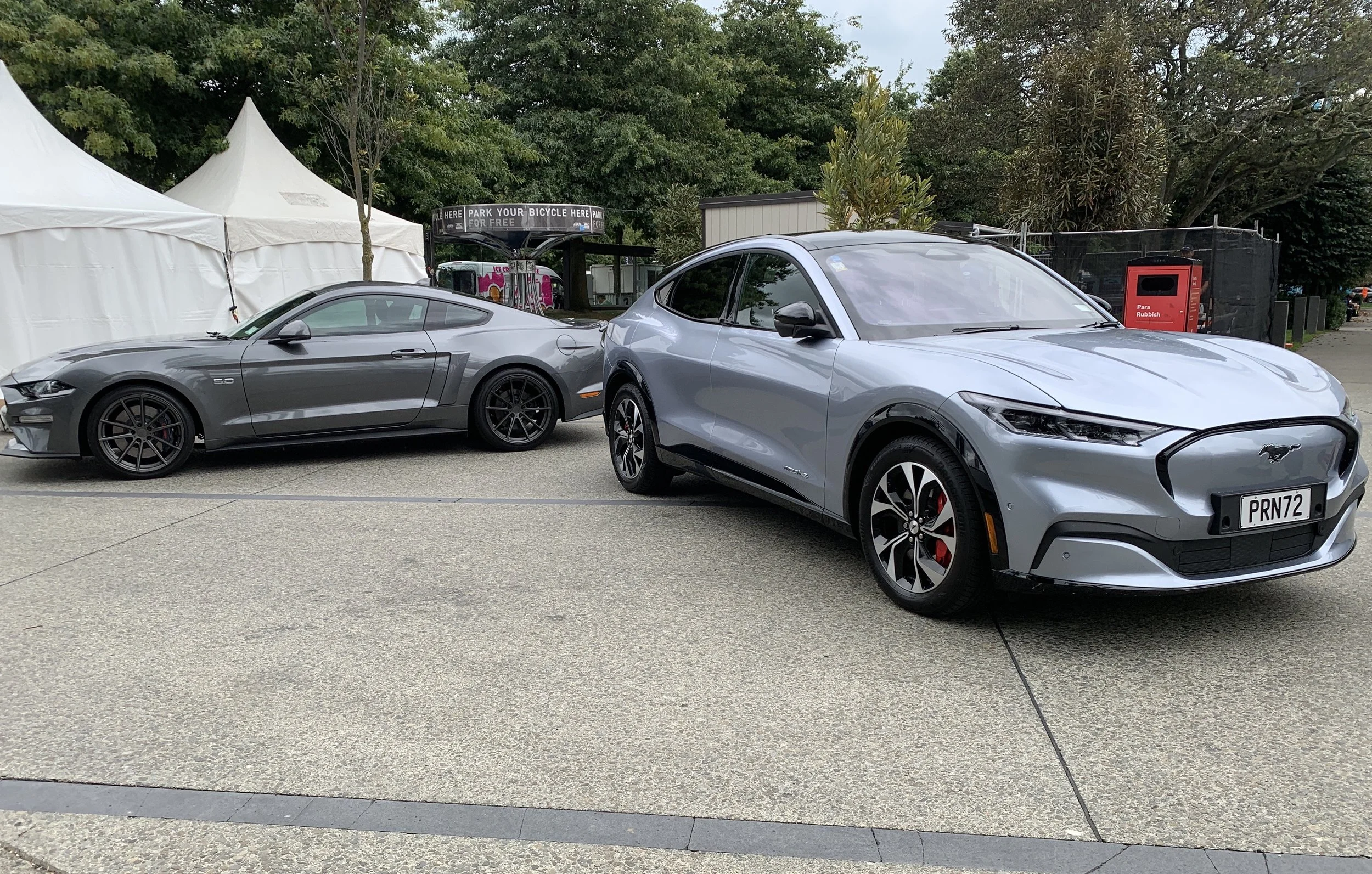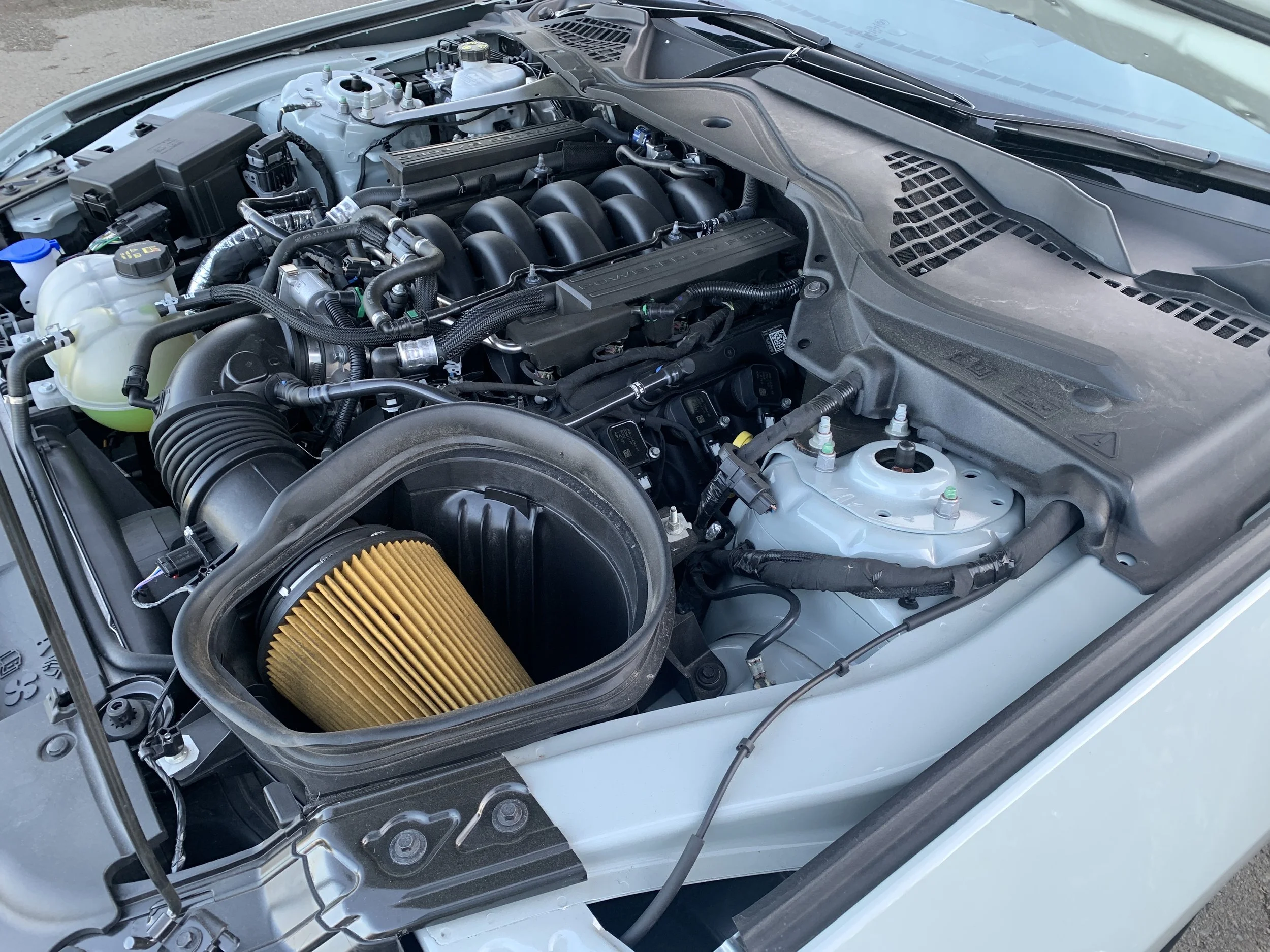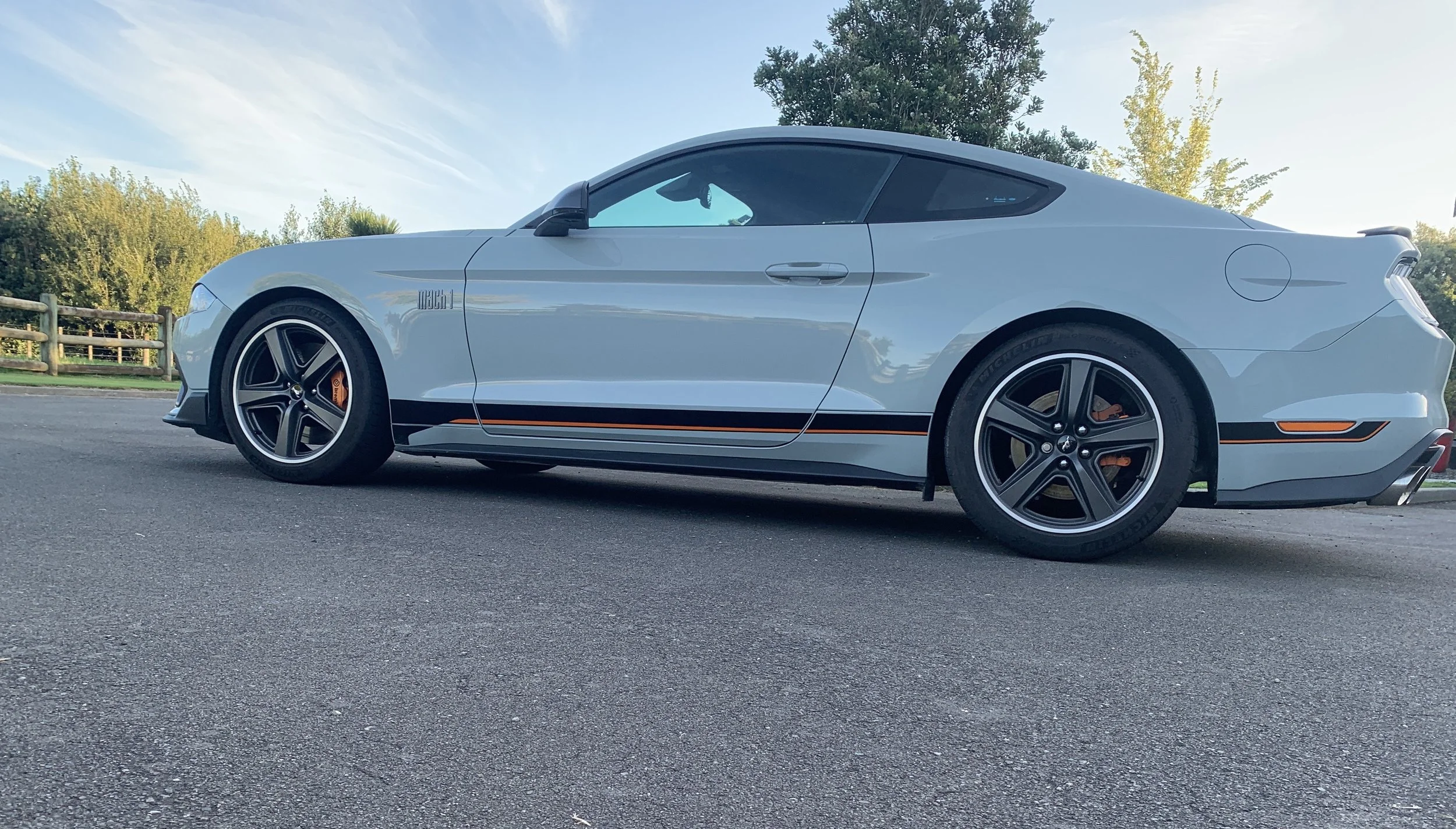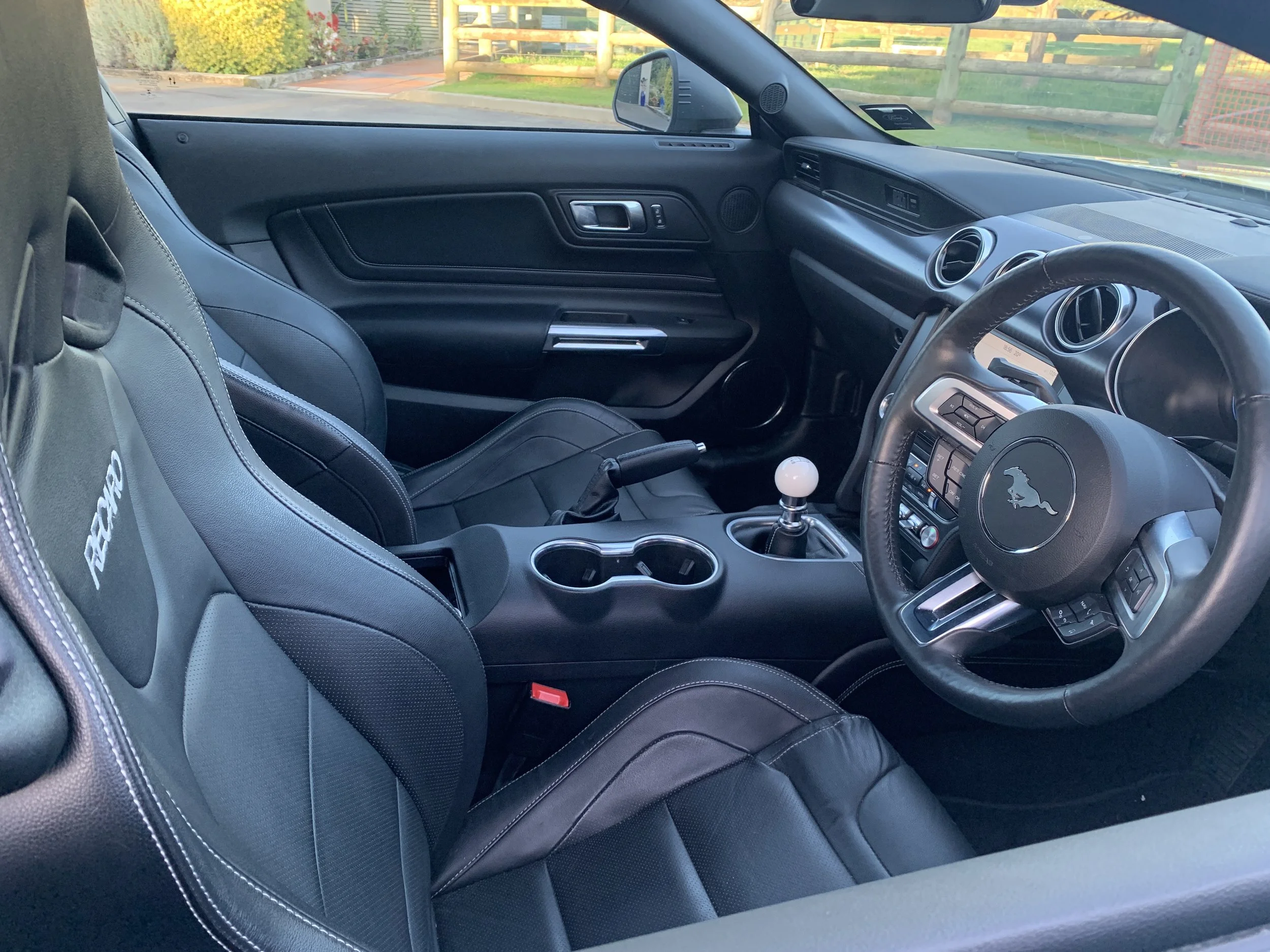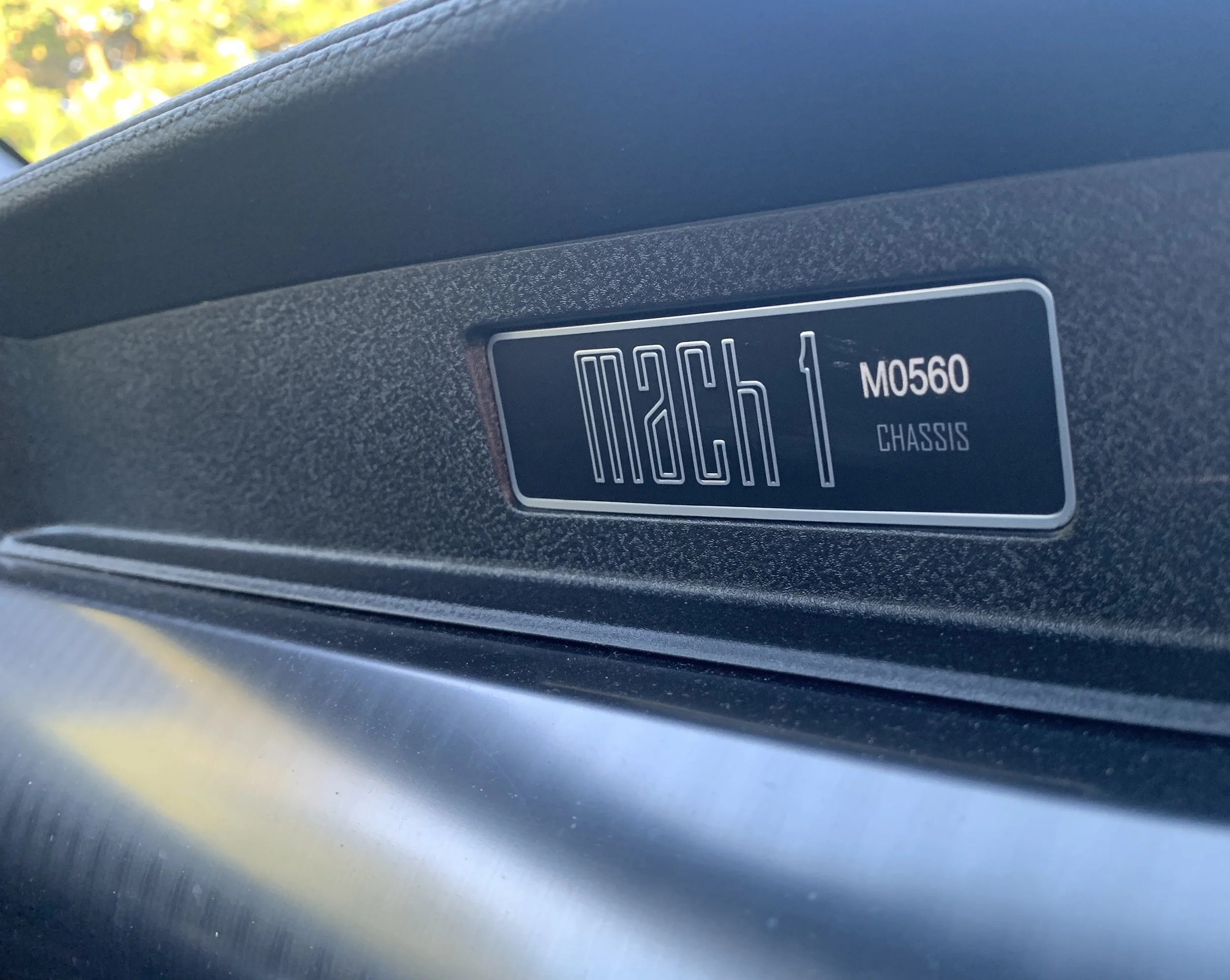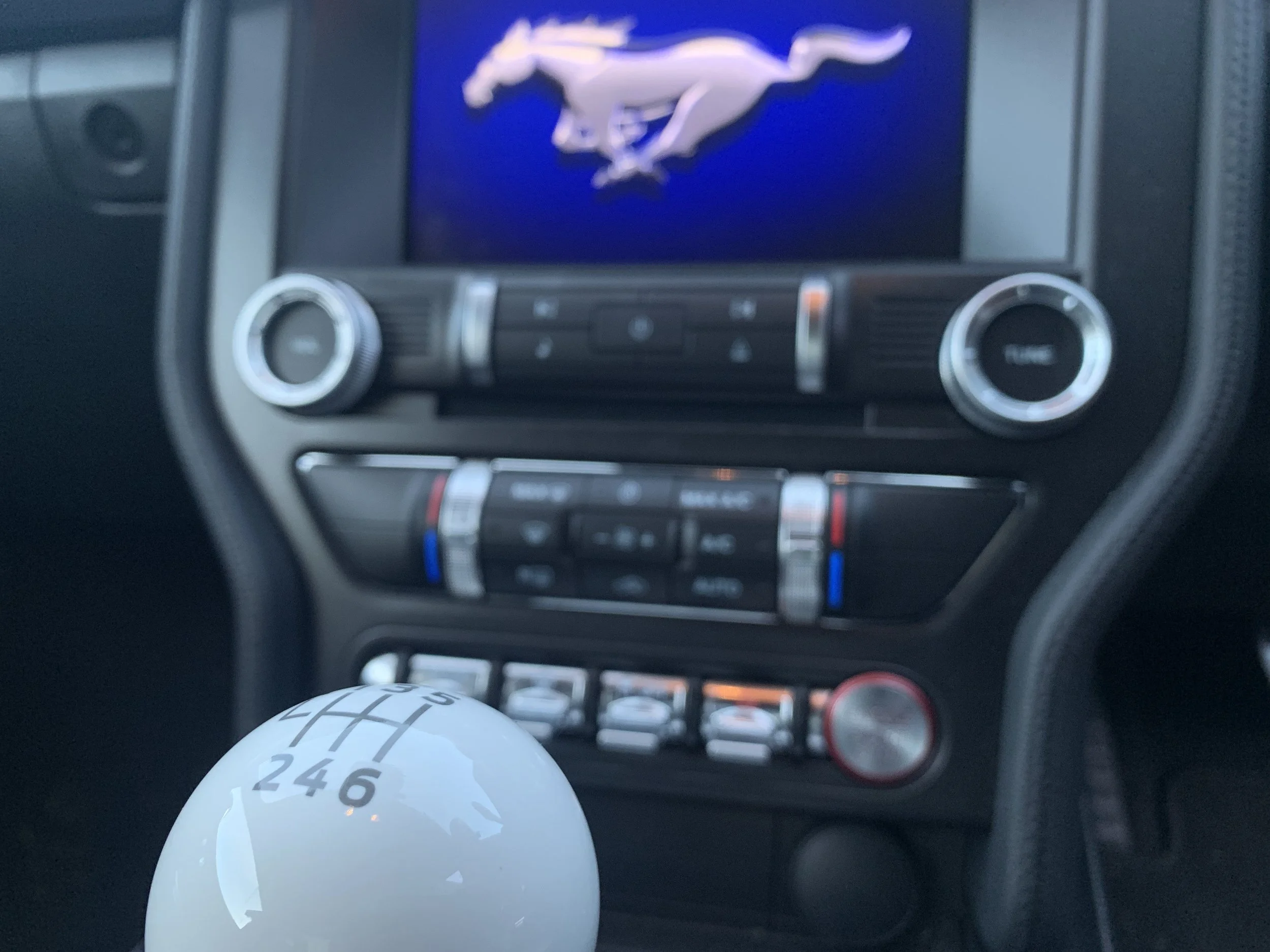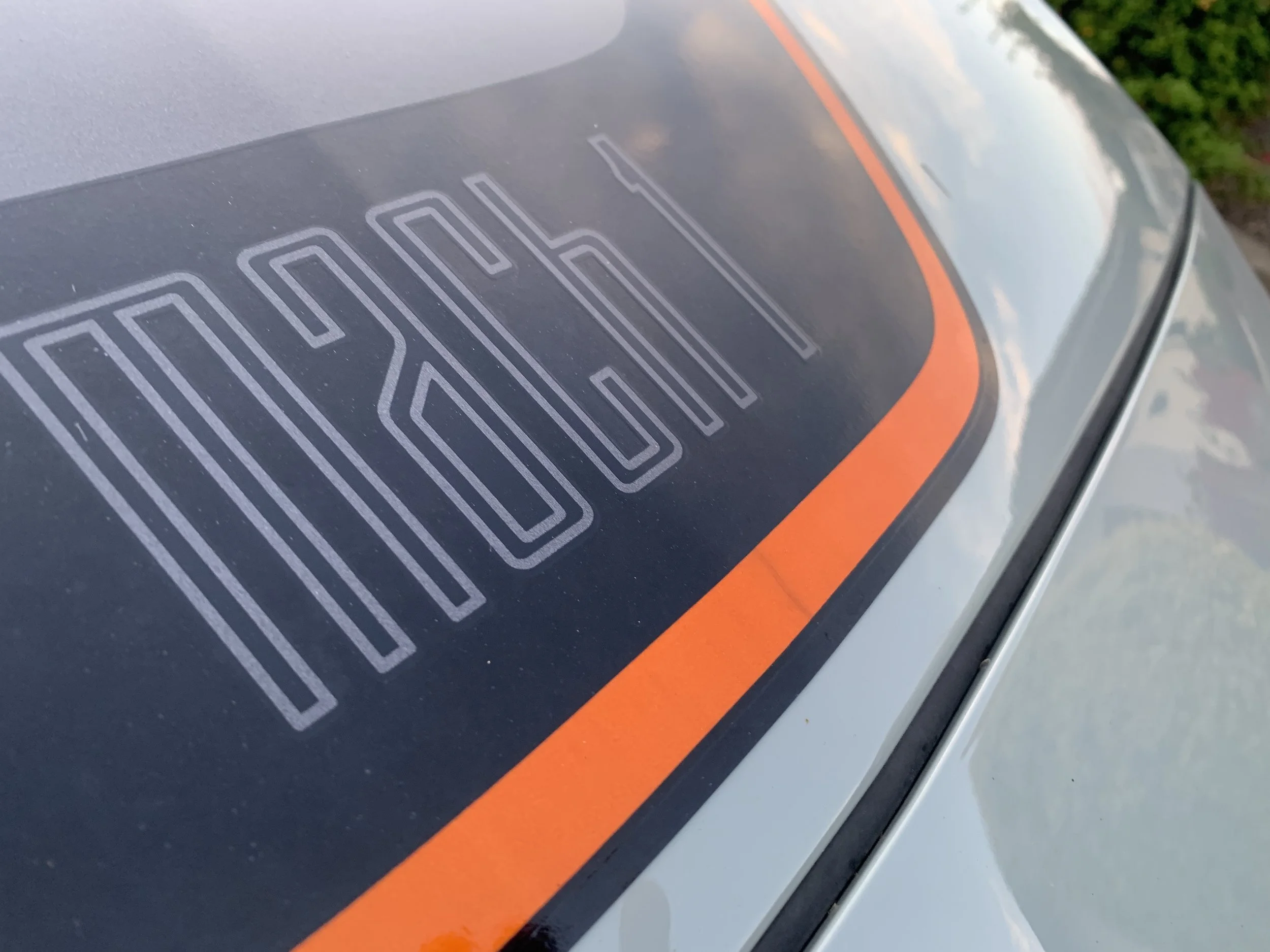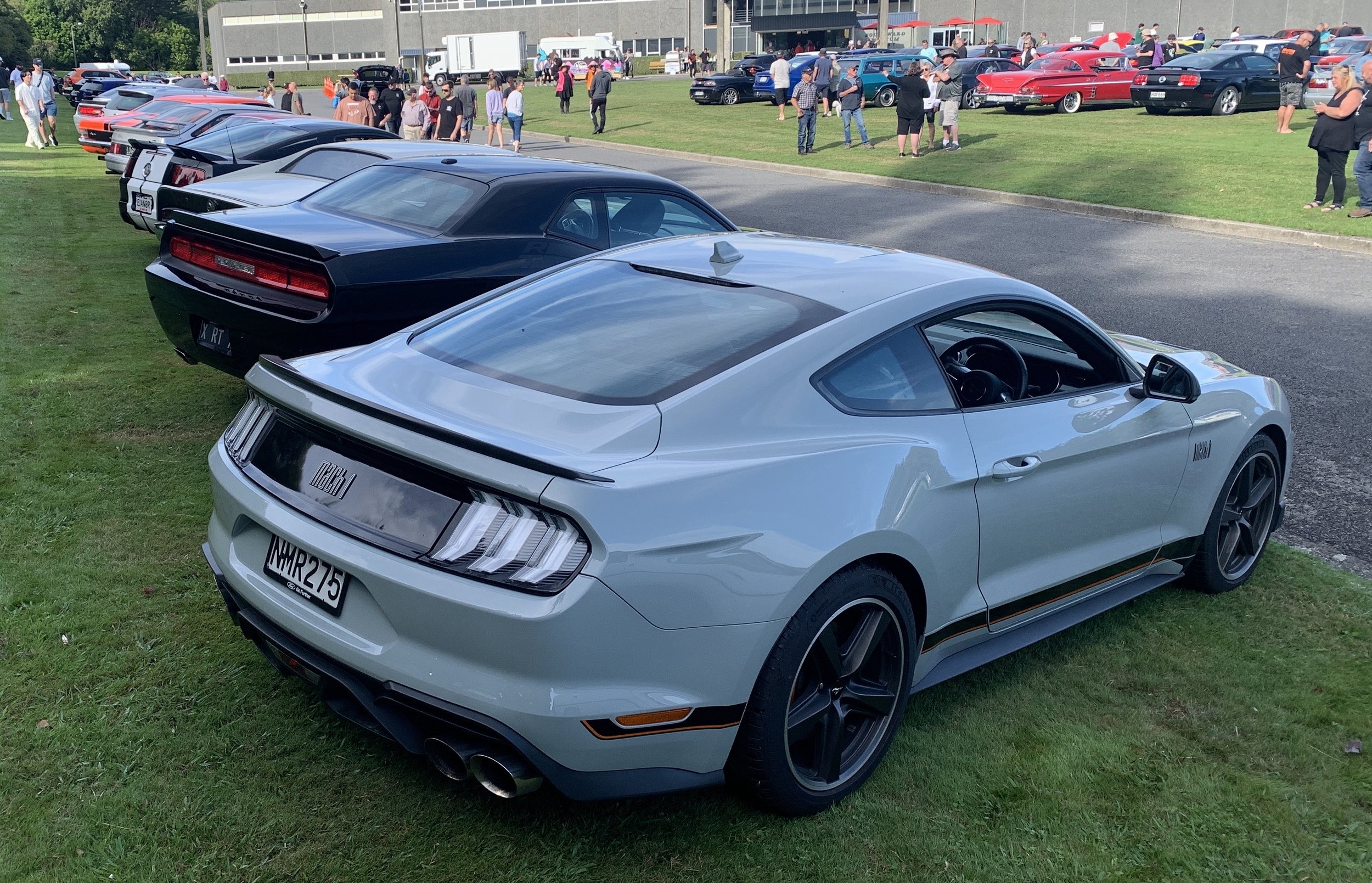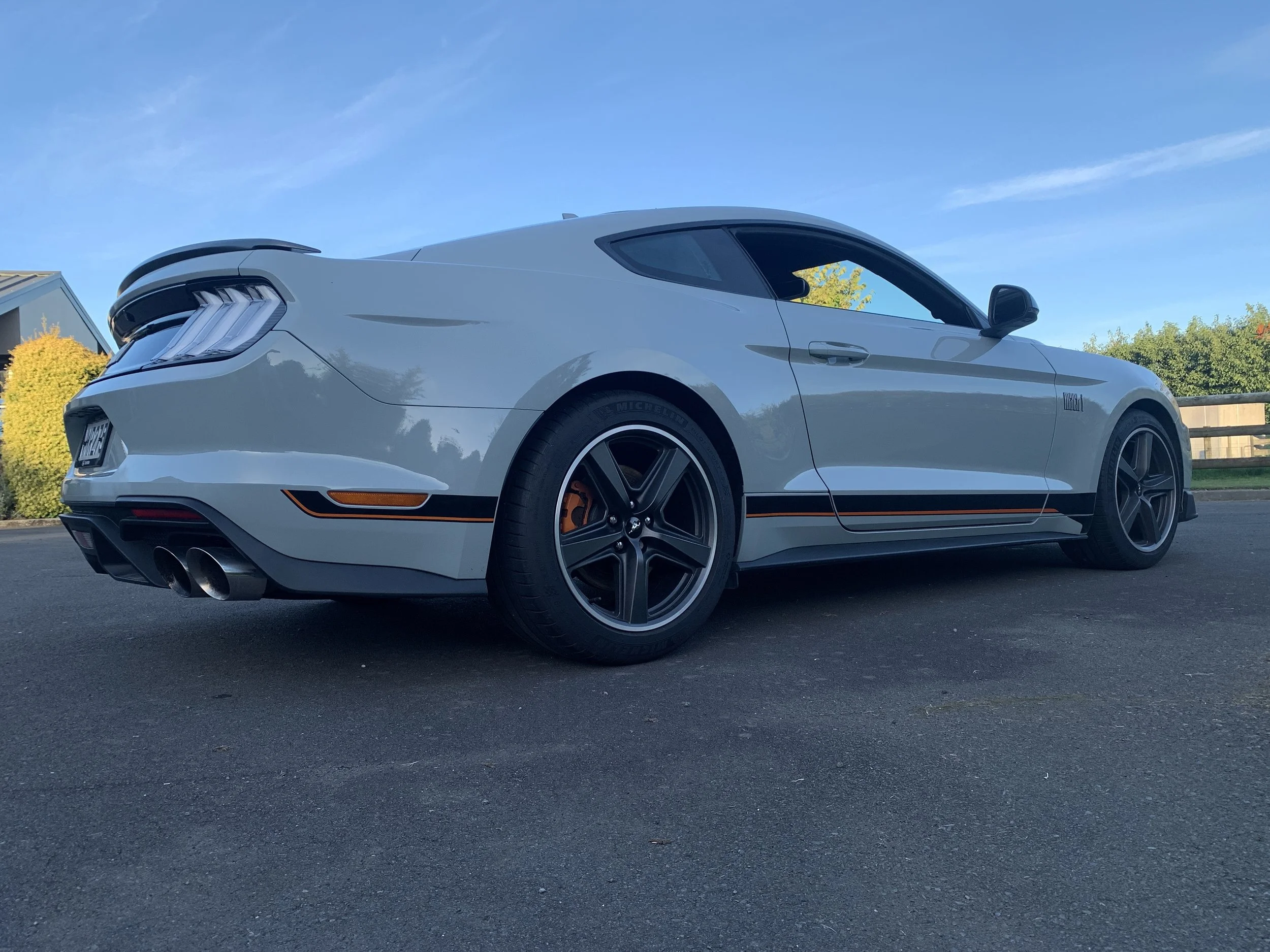Ford Mustang Mach 1 roadtest review 2: More than roar appeal
/Could this hotrod version set the course for the electric model to follow? That seemed an idea worth exploring.
Price: $97,990.
Powertrain: 5.0-litre normally-aspirated V8, 345kW/ 556Nm, six-speed manual, rear wheel drive, claimed economy 13.9 L/100km, 320 g/100 CO2.
Vital statistics: 4784mm long, 2080mm wide, 1381mm high, wheelbase 2720mm.
Safety: Three star ANCAP.
We like: Engineering quality, level of driver involvement.
Not so much: Tired interior, limited visibility.
CONCEIVABLY it could have been a story spun as a baton change between generations.
A day or two spending quality time at the wheel of the greatest of the current old guard cars the factory provisions to chart a path for an eerily similarly-named successor that really is something new.
Sorry, it won’t quite work out. Not fully. Blame, of all things, the poor quality – a highly ironic word for those who know my local area – of the only hotels in my home town available to accommodate a big group of media and brand hosts on the dates they needed.
The roads? They easily passed muster, as I knew they would. Everyone was hand-picked with care and consideration for the job in hand. The racing circuit, the lunchtime arrangements, the restaurant for the celebratory dinner, the flights schedules? All got big ticks, too. But the overnight accommodation? A big fail.
So, it was that all the poring over maps, helping with meet-and-greets and dropping into venues, all to help out a mate in a bit of bind about where to locate a national event he wants to be something a bit special, were wasted.
Such a pity. I was really looking forward to writing how I’d put up a voluntary hand to help sort the upcoming first national media involvement Mustang Mach-E. An event that, had it played out, would have actively incorporated the Mustang Mach 1 I’d been provisioned to drive on a full recce of the route I’d sorted in the Manawatu.
It was going to be quite some escapade. Had it found sign-off, the guests would have exposed the new electric to great terrain and country roads but would have wrapped up with a drive-off between the old top gun I was driving and the most powerful of the electrics – the twin motor GT – on Manfeild’s Circuit Chris Amon. Yes, the place named after the guy who co-drive, with Bruce McLaren, the GT40 that claimed Ford’s most famous single motor-racing win ever, Le Mans, 1966.
Like I say, a LOT of thought had gone into this.
Never mind. The launch will go on … elsewhere, and it promises to be an important one.
Mustang Mach 1 was great; but Mach-E is the future. And it’s a car I’m truly looking forward to.
At risk of riling up old-school fans, that a battery-wedded sports utility takes the same name as the famous coupe (and coneretible) doesn’t upset me. I can understand Ford’s logic. Building a new car that customers will actually pay attention to, let alone lay down their money one, is no easy task.
Using the name of an icon in association with that exercise at least gets tongues wagging. And Ford clearly sees merit in revitalising famous old names. The second electric is called Explorer, the third seems set to be Capri. Maybe there’ll even be a Model T sometime in the future.
Anyway, this transition into the battery age isn’t quite the shock moment in Mustang history some make it out to be, as even when the ‘new’ establishes, the ‘old’ is set to live on.
The sixth generation S550 shape the Mach 1 derives from dates back to 2014, but is the basis of a gen seven, coming here in 2024 and, from all reports, also set for a long production life. Odds are good that the next car will be gunning for business purely as a V8 car. So, some can play ohm on the range, some can stick – for as long as they can stand the price of fuel and, perhaps, some degree of public shaming – their old gas guzzlers. Everyone’s happy, right?
Assuredly, Ford will keep pumping out specials of old and new, too and, just assuredly, Ford NZ will keep the allocation slim – 50 of these, just as there were 50 Bullitts. Forty-nine of each straight to the public, one retained by the brand to play with for a while, then sell off.
You’ll be aware this was MotoringNZ’s second Mach 1 run. First meeting of the car came with Americarna, Taranaki’s annual celebration in February of anything to do with US motoring, when Rob Maetzig used NMR275 to shadow the participant pack, managing to track down an original 1969 Mach 1 while doing do.
He gave a bit of an insight to the model’s history then, so no need to repeat all that, though perhaps one fresh factoid unearthed since is surely fascinating enough to share. It’s about the naming convention.
This, of course, is from aviation. Mach 1 is basically the speed above the point where the sound barrier is breached. Ford chose it in celebration of the man who achieved that first, a total god of speed, legendary American fighter pilot Chuck ‘Right Stuff’ Yeager. It was a good choice of badge name: The original car broke 295 speed and endurance records during its debut year. Anyway, Mach 1 has always been synonymous with the fastest Mustang you could buy short of venturing into the realm of Shelby or Boss badges.
That the Mach 1 would reinvigorate fond memory of the Bullitt could hardly be avoided; they are closely linked cars.
That Mustang’s shape has stood up to time’s test is no more a surprise – really, it’s a clever reprise of the Coke bottle look that done so well for it – than the interior being less so successful.
Even when this car was brand-new – and that’s back in 2014 – the cabin felt a bit too yester-yeary. I went to the world launch (in Los Angeles; we stayed at a fantastic Hollywood hotel) and recall all the debate even then. A mid-life fresh got rid of some of the toggle switches that caused most angst, but overall the cabin and instrumentation hasn’t aged well. You can live with it, but can also understand why all that side of things has been utterly reconfigured for the next one.
What they won’t bother fixing is trying to make it more accommodating for more than two adults. Frankly, the only way to do would be to ruin the silhouette. Ain’t gonna happen. So, basically, you have a car that is hopelessly cramped in the back for all but children. Honestly, you won’t even get a seat belt on. If family use is important, there’s an SUV.
It’s best to get this aspect done and dusted on grounds that’s hardly the point. Reality is, this side of things is just part of a persona you either love. Or don’t.
It’s the same with the engine. There’s no duplicity. America’s rarely been the place for shop for an outstandingly modern petrol powerplant, and the Coyote 5.0-litre is certainly only a standout within its own cultural boundaries.
Moreover, its CO2 output and thirst are short of being healthy under Clean Car’s watch. By end of the eight days of tenure, the test car was well into emptying its second tank of fuel. What also impacts is that the first lot was largely accounted for by driving the proposed launch route … which put just under 200 kilometres on the odometer. Well, it was a winding road workout and we weren’t aiming for economy.
Still, to keep it in context, and perhaps to show there’s some ‘less makes for more’ weirdness going on with this car, let two factors also be shared. First, the car was, with an overall average of 13.4 litres per kilometre, way less of a guzzler with me than it had been when fellow contributor Rob Maetzig had it. Also, the consumption I saw was 0.5L/1000km under expectation Ford itself holds.
I hadn’t expected this, given my involvement provisioned a swag of energetic running on quiet, 100kmh-posted country roads, and dalliance with launch control (drag strip mode in Ford-speak). Plus, from what I can glean, Rob basically tooled around Taranaki, giving it the occasional rev and engaging the loudest exhaust setting whenever he had a crowd (as you do on Americarna) but never driving hard.
Living with that kind of hunger might be possible if you didn’t use the Mach 1 as a daily driver and instead just kept it for special occasions. That’s probably the way to go as it has a special ops kind of feel about it.
As relatively orthodox as this engine is, it is also a brilliant thing to sit behind. In standard tune, the Coyote is a force of nature, providing effortless thrust accompanied by a gentle woofle.
In Mach 1 guise, even in its cruise setting, it’s not only more thunderous, but also has a spikier, angrier edge to its voice. In the full sport settings, it’s a god of phwoar.
So much credit has to go to the 'Open Air Induction System'; the intake manifold and 87mm throttle bodies from the Shelby Mustang GT350 model that, because it’s only made in left-hand drive, cannot be sold new here, though it and the GT500 have landed as grey imports. You’ll lift the bonnet to show it off: Or, at least, I did when taking the car to the ‘coffee and cars’ morning held monthly, every second Sunday, at Southward Car Museum, at Waikanae. It was the only Mach 1 there, but hardly alone – pony cars were in abundance on the front lawn.
Recalibrated engine management software and special fuel injection (that combines both port and direct injection for low- and high-pressure work respectively) liberates more horsepower from this engine than it evidences in standard tune, but the same as the Bullitt: 345kW and 550Nm.
If you buy direct from Stateside, you get more still. Ours is an export tune pinned back by emissions rules for other places. Okay, Australia. Still, it's a bit faster than the regular Mustang 5.0, running 0-100kmh in 4.6 seconds, around three-tenths quicker, and going on to a 267kmh top speed.
The latter would really test the Mach 1’s mettle. Whether Mustang can be called an outright sportscar could be argued long and hard, simply on grounds of its weight – 1755kg in this instance - and substance. Even among the few large front-engined, rear-drivers around, it’s a big mutha.
Nonetheless, what can be appreciated, and respected, about the Mach 1 is that it’s far from being simply about the powertrain. There’s no sense of it being a hot engine with some bodywork slung around it. This was created as a track-focused proposition and you can feel the love that went into finessing it for that purpose.
It’s clearly operating at a higher level than a regular GT Mustang. The one element that immediately seems outstanding is the steering and, beyond that, the relative responsiveness of the front end of the car. Coupled to the subframe and toe-links shared with the Shelby models and retuned electric power-assisted steering too, Ford claims this has the most direct and communicative steering of any Mustang it sells here. I’d say that’d be hard to challenge. It is just tangibly keener to get turned in and offer sharper more feedback through the wheel.
Some Mach 1s came here with the 10-speed automatic. That’s nice … if all you want to do is cruise. For anything more, the six-speed Tremec manual I experienced is the ‘one’. For sure, operability in every situation is a bit of a workout; the twin-plate clutch is heavy (of course) and it demands (of course) a moment’s pause with every upshift until it fully warms.
But once the car is up to pace the box is beautifully positive, a great accomplice that allows you to focus on a V8 that loves to roar; with the bonus feature of a rev-matching function and engineered to continence 'flat' upshifts as well. An auxiliary oil cooler and a special filter adaptor to ensure consistent fluid flow during high lateral loads reinforces that it’s a ‘worked’ engine designed to be given plenty of stick.
The MagneRide dampers are given their own state of tune and are teamed with bespoke springs, anti-roll bars and bush specifications. It’s all done with US driving conditions in mind, so you’ll need to spend some time working out what settings work best for our surfaces and it’d pay to take care on slippery surfaces. Overall in general driving it stops short of being utterly unruly, but at some token the most extreme setting, Track, really shouldn’t be trifled with lightly. This much grunt and that transmission lends plenty of opportunity for oversteer, but the limited-slip differential gives it loads of traction to ensure it feels playfully tail-happy.
Going fast on a track would the best way of testing the mettle of the brakes, which have extra cooling, and the aero pack.
The car’s look definitely has been influenced by the marketing folk; signalling firm DNA link to the 1969 original determines the size and style of the Mach 1 emblems (on the front wings and on the back panel circle where regular Mustangs have either a galloping pony or GT ), but also the five-spoke style of the 19 inch rims and why it has two blanked-off circles in the main radiator grille. These are pop-out panels are in case an owner fancies fitting some aftermarket driving lights to make look more like the first version. All sorts of legalities prohibit this provision happening at factory level.
But as much as the look – and the light grey paint – are all about celebration of past glory, it’s not a show pony in respect to the styling. Ford vows that the Mach 1 can generate up to 22 percent more downforce than a Mustang GT. That’s why the front end is sleeker with a different arrangement of grille, bumper and lower air intakes.
You’ll also spot a small lip spoiler on the boot, which contributes to the increased downforce, as well as the rear diffuser borrowed from the GT500 and a set of quad tailpipes that are larger (4.5 inches for each exit) than those on the regular V8.
In respect to dressing up the interior? Well, not a lot of effort, really. There's an anodised metal look to the instrument cluster, a smattering of 'Mach 1' logos and the obligatory bespoke passenger-fascia plaque denoting the model and its individual build run number.
The last time Ford built a Mach 1 it was in the early 2000s, not long after the 2001 Bullitt. It’s the same story this time around. Two years after the latest Bullitt shot in, this car arrived.
They’re so similar in some ways; yet assertion Carl Widmann, Ford’s chief programme engineer for the Mustang, made when Mach 1 was revealed about this car being more than ‘Bullitt Part 2’ makes sense. There’s a host of engineering that’s gone into making the Mach 1 a more track-focussed car than the GT or the Bullitt. Owning all three would make a cool collection.


